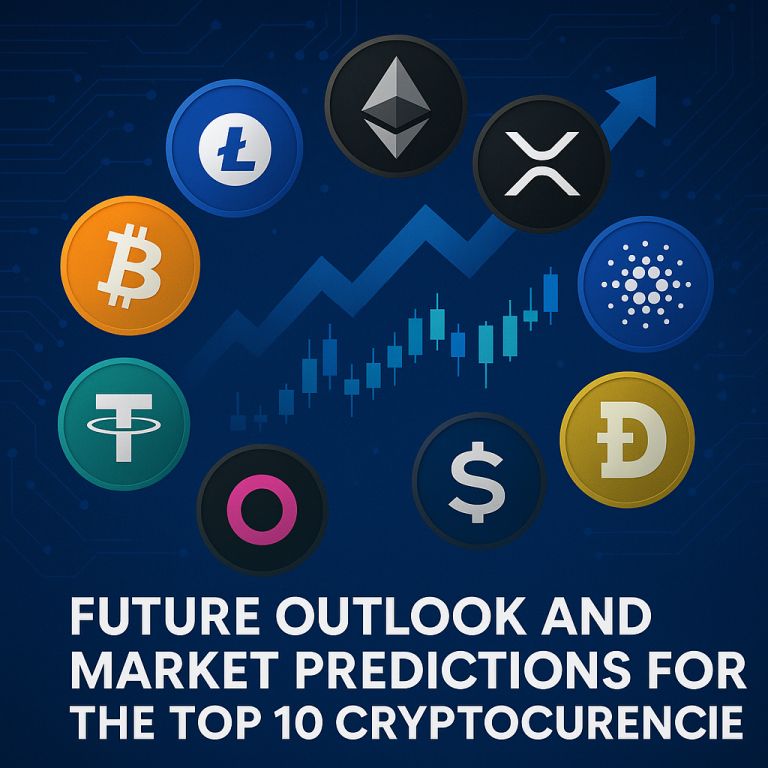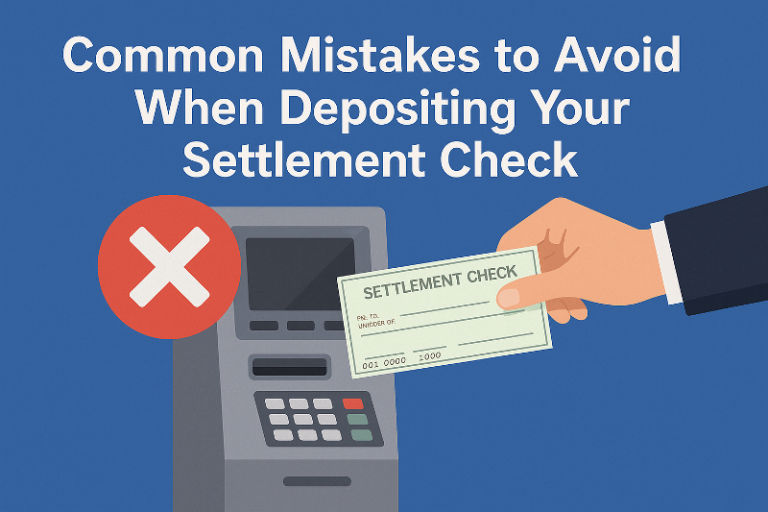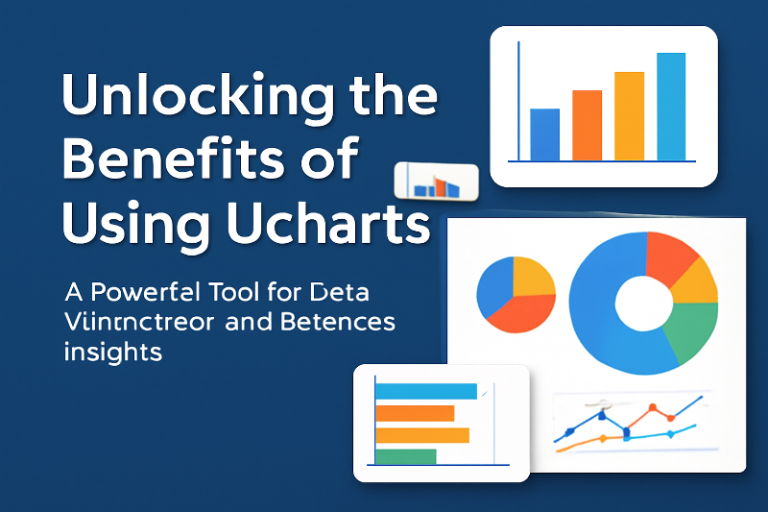Future Outlook and Market Predictions for the Top 10 Cryptocurrencies
In a market driven by technology, adoption and policy, forecasting where the top cryptocurrencies will be headed requires careful examination of each project’s internal architecture, its role in the digital economy, and the external forces that can change demand. This article examines ten leading digital assets, treats each as a distinct project with its own structure and growth levers, explores multiple internal components for each, and provides forward-looking scenarios. Live chart embed codes are included for real-time price context, enabling readers to follow market movements while reading analysis.
1. Bitcoin — What are the future predictions for Bitcoin?
Institutional adoption
Institutional adoption has been a consistent source of demand for Bitcoin, and further inflows from pension funds, insurance companies and corporate treasuries could strengthen its role as a long-term store of value. When institutions allocate a portion of their portfolios to Bitcoin, they typically hold for extended periods, which reduces circulating supply and can stabilize price action. This behavior increases market depth, reduces short-term volatility, and attracts ancillary services such as custody, audit, and regulatory compliance tools that further legitimize Bitcoin in traditional finance.
ETF and regulatory frameworks
Regulated investment products such as spot Bitcoin exchange-traded funds make it easier for retail and institutional investors to gain exposure. A supportive regulatory framework tends to encourage inflows by reducing custody and compliance friction. Conversely, prohibitive rules or heavy restrictions can reduce access and dampen price performance. Ongoing dialogues between regulators and market participants will shape the legal instruments available for Bitcoin investors and influence how capital is allocated in the years ahead.
Layer-2 scaling and Lightning Network
Layer-2 solutions like the Lightning Network increase Bitcoin’s utility for small payments by enabling faster, lower-cost transactions off the main chain. As adoption of these solutions grows—through merchant integrations, wallet improvements, and better user experience—Bitcoin can play a larger role in everyday payments and microtransactions. That utility complements its role as a value reserve and helps broaden on-chain use without adding pressure to base layer throughput.
Halving cycles
Bitcoin’s supply issuance is halved roughly every four years, reducing the flow of new coins into the market. Historically, halvings have been associated with bullish price action in subsequent cycles due to the diminishing supply added by miners combined with steady or rising demand. While past performance is not a guarantee, the reduced issuance is a structural factor that markets consider when valuing Bitcoin over multi-year horizons.
Sovereign and treasury holdings
If governments or large corporations diversify reserves into Bitcoin, the implications for scarcity and price discovery would be significant. Official adoption provides a credibility boost and may influence other public and private entities to consider similar strategies. The possibility of sovereign or corporate balance sheets holding Bitcoin makes network security, custody solutions, and regulatory clarity top priorities for sustained mainstream acceptance.
| Attribute | Notes |
|---|---|
| Primary value driver | Scarcity + institutional demand |
| Short-term risk | Regulatory actions and macro shocks |
| Long-term upside | Global reserve use and broader adoption |
| Utility improvements | Layer-2 payments and integrations |
2. Ethereum — What future pathways will Ethereum take?
Data availability and proto-upgrades
Improvements in how data is made available for off-chain execution environments are central to Ethereum’s scaling plan. Enhancements that lower data costs for rollups and other layer-2 solutions will reduce transaction fees and broaden access. By improving data handling, the network allows more transactions to be processed indirectly while preserving security at the base layer, thereby enabling a larger and more efficient application ecosystem to develop on top of Ethereum.
Rollups and layer-2 ecosystem
Rollups—both optimistic and zero-knowledge varieties—handle most of the growth pressure by executing transactions off-chain and settling proofs to Ethereum. The success of these technologies hinges on user experience, tooling, and interoperability among competing rollups. Increased rollup adoption will move routine transactions away from the main chain while preserving Ethereum’s role as the final settlement layer, creating a layered architecture that supports high throughput and diverse applications.
EVM compatibility and cross-chain connectivity
Ethereum Virtual Machine compatibility is a key advantage for projects moving between networks or deploying on multiple environments. Broad compatibility simplifies developer workflows and helps projects reuse code and libraries. Cross-chain bridging and communication allow assets and functionality to flow between Ethereum and other networks, increasing the practical utility of ETH and the broader token ecosystem.
Tokenization and decentralized finance expansion
Tokenizing real-world assets such as bonds, equities, or real estate on Ethereum opens new markets for liquidity and access. As institutional participants experiment with tokenized assets for efficiency and programmability, demand for secure, transparent settlement layers increases. Decentralized finance protocols that originate and manage these tokenized instruments will drive activity and fees, bolstering ETH demand for settlement and gas.
Staking economics and fee dynamics
Staking reduces the liquid supply of ETH as more validators lock tokens to secure the network. Combined with fee burning mechanisms, higher usage can create downward pressure on total supply, potentially supporting price over time. The interplay of staking yields, liquidity needs, and protocol fee economics will influence investor decisions and the market’s valuation of ETH.
| Attribute | Notes |
|---|---|
| Primary strength | Developer community and DeFi ecosystem |
| Scaling focus | Layer-2 rollups and data availability |
| Monetary dynamics | Staking + fee burns can be deflationary |
| Adoption trigger | Low-cost rollups and tokenization use cases |
3. Binance Coin — What is the outlook for BNB?
BNB Chain infrastructure
BNB Chain functions as a high-throughput environment for smart contracts and decentralized applications. Its performance and developer experience impact how many projects choose to deploy on it. Continued investment in tooling, validators, and cross-chain bridges will affect how broadly the chain is used for finance, gaming, and NFT marketplaces—each influencing demand for the native token.
Token burn and supply mechanics
Periodic token burns reduce the circulating supply of BNB and are designed to create scarcity over time. The rate and nature of these burns, combined with utility and demand for the token, shape long-term supply dynamics. If burns outpace new issuance or if demand rises, the price may experience upward pressure, though this is moderated by market sentiment and regulatory factors.
BEP-20 token ecosystem
Many projects adopt the BEP-20 token standard for compatibility on the BNB Chain, which drives transactional throughput and demand for gas payments in BNB. A thriving BEP-20 ecosystem encourages liquidity, developer interest, and user activity, all of which feed back into token utility and market value.
Exchange-centric utility
BNB’s role as an exchange utility token—used for fee discounts, staking, and platform services—anchors much of its short-term demand. Changes to exchange policies, listing access, or the attractiveness of discount mechanisms will influence user preferences and BNB’s transactional volumes, with the exchange’s reputation and regulatory treatment being critical considerations.
Cross-chain and DeFi expansion
As BNB Chain grows bridges to other networks and sees an uptick in DeFi applications, the token’s use cases expand beyond exchange-related functions. Greater cross-chain activity and productive DeFi yields can attract capital and project launches, helping to diversify demand sources and reduce concentration risk associated with exchange dependency.
| Attribute | Notes |
|---|---|
| Core role | Exchange utility and chain token |
| Demand levers | Token burns, exchange services, DeFi usage |
| Key risk | Regulatory scrutiny of exchanges |
| Growth path | Cross-chain adoption and decentralized services |
4. XRP (Ripple) — What future developments may drive XRP?
RippleNet and liquidity services
Ripple offers on-demand liquidity services that use XRP to facilitate cross-border transactions without pre-funding accounts in destination currencies. Wider acceptance by remittance providers and payment platforms could boost transactional demand for XRP, particularly in corridors where traditional settlement is slow or costly. Real adoption will depend on integration ease, cost benefits, and regulatory clarity for participants.
Regulatory clarity and legal outcomes
Legal rulings and regulatory frameworks significantly influence XRP’s prospects, especially in major markets. Favorable outcomes reduce uncertainty and make institutional and corporate adoption more likely, while unfavorable decisions or ongoing litigation can constrain access to some markets and limit on-chain activity. Clear, globally consistent regulation would help scale usage.
Partnerships with financial institutions
Strategic alliances with banks, payment providers, and fintech firms can extend Ripple’s reach. When payment rails integrate XRP-based corridors or use Ripple’s settlement technology, the token’s utility for liquidity provisioning grows. These partnerships also validate technical performance under production environments and accelerate real-world use cases beyond pilot programs.
XRP Ledger upgrades
Continuous improvements to the XRP Ledger around performance, programmability, and interoperability can increase developer interest and broaden applications. Upgrades that make the ledger more programmable or easier to connect with other environments will expand the kinds of apps and settlements that can run, increasing on-chain demand for the token.
Cross-border settlement adoption
Adoption in remittance corridors and between financial institutions is the clearest transactional use case for XRP. If the token becomes a standard for low-cost liquidity in cross-border flows, daily transactional volumes and real economic usage will support broader market value. Achieving meaningful scale requires competitive cost structures and reliable rails for settlement.
| Attribute | Notes |
|---|---|
| Main use | Cross-border liquidity |
| Adoption hinge | Bank and remittance partnerships |
| Regulatory dependence | Litigation outcomes and policy clarity |
| Network improvements | Ledger upgrades and interoperability |
5. Solana — What predictions lie ahead for Solana?
Validator and consensus resilience
The durability of Solana’s validator network and its consensus architecture is crucial for long-term trust. Ensuring a distributed validator set, robust node software, and rapid incident response reduces the probability of prolonged outages. Strengthening these areas improves developer confidence and can drive broader adoption for latency-sensitive applications.
Composability and developer tooling
Solana’s appeal to developers depends on accessible tooling, libraries, and documentation. A strong SDK ecosystem shortens time-to-market for projects and encourages innovation in gaming, DeFi, and NFT marketplaces. Better developer experience increases the number and quality of deployed dApps, which in turn raises network usage and token demand.
Ecosystem activity: NFTs, DeFi, gaming
Solana has attracted projects across nonfungible tokens, decentralized finance, and Web3 gaming due to its fast confirmation times and low fees. Continued growth in these verticals leads to sustained on-chain activity and liquidity. High-value projects and strong user retention reinforce platform choice and token utility.
Staking and economic incentives
Staking mechanisms encourage token holders to secure the network and can reduce circulating supply available for trading. Competitive staking yields and accessible staking interfaces attract long-term holders who contribute to network security. When staking rewards align with security and economic sustainability, both the network and the token benefit.
Outage mitigation and stability
Past interruptions have highlighted the importance of stability; reinforcements to monitoring, redundancy, and failover systems can restore confidence among institutional users. As operational resilience improves, Solana’s suitability for mission-critical dApps increases, potentially unlocking more institutional and developer interest.
| Attribute | Notes |
|---|---|
| Developer focus | Low latency and low fees |
| Operational risk | Network outages and performance |
| Demand sources | NFTs, gaming, DeFi |
| Improvement path | Stability tools and validator diversity |
6. Cardano — What future trajectories may ADA take?
Consensus and protocol evolution
Cardano’s proof-of-stake protocol, designed with academic rigor, evolves through research-backed upgrades. Ongoing improvements to consensus algorithms aim to increase throughput and efficiency while preserving security. A steady cadence of peer-reviewed enhancements helps maintain the project’s credibility and attracts projects that prioritize formal verification and reliability.
Smart contract adoption and native languages
Cardano’s smart contract platforms use languages that prioritize safety and formal verification, which appeals to projects handling high-value financial instruments. Wider adoption of these languages by developers and educational resources that lower the learning curve are essential to expand application diversity and drive token utility through on-chain activity.
Interoperability and sidechain solutions
Interoperability with other chains and support for sidechains reduce isolation risks and allow Cardano projects to exchange value and data with external networks. Enhancing cross-chain mechanics enables more complex multi-chain applications, increasing the protocol’s practical relevance across markets beyond its native ecosystem.
Governance and treasury sustainability
On-chain governance that funds development and rewards contributions ensures continuous improvement and ecosystem growth. A transparent treasury model that funds meaningful initiatives can accelerate adoption by supporting grants, bounties, and partnerships that bring real use cases to production.
Real-world applications and identity projects
Cardano’s emphasis on identity, education, and supply chain projects targets sectors that value formal verification and traceability. Successful deployments in government, healthcare, or education provide tangible proof of concept and can generate steady demand for ADA in application fees and staking for network security.
| Attribute | Notes |
|---|---|
| Design focus | Research and formal methods |
| Developer requirement | Adoption of Plutus/Marlowe languages |
| Use case emphasis | Identity and institutional projects |
| Growth driver | On-chain governance and treasury funding |
7. Polkadot — What predictions are expected for Polkadot?
Parachains and relay security
Polkadot’s relay chain provides security to many parachains, enabling projects to benefit from shared protection while customizing functionality. A growing number of parachains improves the network’s value proposition, as projects gain from pooled security and easier connectivity to other parachains, reducing the friction associated with building standalone chains.
Cross-chain messaging (XCMP)
Robust cross-chain messaging enables decentralized applications that span multiple parachains, creating richer user experiences and composable services. When messaging is secure and performant, assets and data flow more freely across the ecosystem, making Polkadot an attractive substrate for multi-chain apps and commercial deployments.
Interoperability and hub positioning
If Polkadot realizes its vision of seamless interoperability, it can act as a hub connecting specialized chains, each optimized for particular use cases. This hub role reduces repetitive infrastructure costs and allows projects to interoperate without complex bridging solutions that often carry security tradeoffs.
Governance and upgrade model
Polkadot emphasizes on-chain governance that supports forkless upgrades, making the network more adaptable to changing needs. A flexible governance model that avoids contentious hard forks can encourage long-term investment and smoother protocol evolution driven by stakeholder consensus.
Developer adoption and parachain auctions
Parachain auctions allocate secured slots to projects that win community backing. High demand for parachain slots indicates developer confidence and a busy roadmap of projects. Broad developer adoption across varied industries creates diversified demand for DOT and strengthens the network’s ecosystem value.
| Attribute | Notes |
|---|---|
| Value proposition | Interoperability through parachains |
| Protocol strength | Shared security and forkless upgrades |
| Adoption indicator | Parachain slot demand and projects |
| Growth enabler | Cross-chain messaging maturity |
8. Avalanche — What future direction may AVAX follow?
Subnet architecture
Avalanche’s subnet model permits partitioning the network into custom blockchains for specific applications or institutional needs. This flexibility appeals to enterprises and projects seeking customizable governance and compliance features. As more subnets are launched, demand for AVAX as the native staking and settlement token can increase where subnets require native staking or shared security resources.
Consensus improvements and performance
Optimizing Avalanche’s consensus mechanisms for lower latency and higher throughput helps attract applications sensitive to speed and finality. Enhancements that reduce node overhead and simplify node operations make it easier for validators and institutions to support the network, strengthening decentralization and resilience.
DeFi and asset issuance
As decentralized finance protocols and token issuers select Avalanche for performance or custom subnet features, transaction activity and liquidity can expand. Asset issuance for tokenized securities or commodities on Avalanche can position the network as a venue for high-frequency financial applications and secondary markets.
Cross-chain bridging
Secure bridges to major ecosystems increase the flow of liquidity and functionality into Avalanche. Reliable bridging reduces friction for users moving assets between networks and enhances the utility of AVAX by enabling broader multi-chain strategies and liquidity provisioning that leverage Avalanche’s speed.
Institutional use and private subnets
Custom subnets tailored for regulated institutions create an opportunity for Avalanche to serve enterprise-grade blockchains with specific compliance and governance needs. Adoption by institutions that require private or permissioned environments, combined with the ability to interoperate with public networks, helps position AVAX as both a public and enterprise utility token.
| Attribute | Notes |
|---|---|
| Unique feature | Custom subnets for tailored blockchains |
| Adoption target | DeFi and enterprise subnets |
| Liquidity enabler | Cross-chain bridges |
| Growth lever | Institutional subnet demand |
9. Chainlink — What predictions might Chainlink realize?
Decentralized oracle network
Chainlink operates as a decentralized network of data providers and nodes that deliver real-world information to smart contracts. The breadth and reliability of these data feeds are crucial for financial applications, insurance, and any contracts that require off-chain inputs. As more dApps rely on accurate external data, the demand for dependable oracle services will likely increase.
Cross-chain interoperability protocol (CCIP)
Chainlink’s cross-chain messaging initiatives aim to standardize communication across different blockchains, enabling tokens and data to move seamlessly between networks. If adopted widely, CCIP reduces friction for multi-chain applications and increases the importance of Chainlink as middleware, expanding potential revenue streams and network effects.
Data monetization and provider ecosystem
External data providers—such as market data firms, weather or IoT sensors—can monetize their feeds through oracle networks. A robust marketplace for high-quality feeds benefits both providers and consumers, fostering a sustainable ecosystem where reliable data becomes an asset class that powers sophisticated decentralized applications.
Oracle network decentralization
Increasing the diversity of nodes and data sources strengthens oracle resistance to manipulation and outages. Decentralization improves trust and reduces counterparty risk for applications that require high integrity inputs. This robustness is a major selling point when financial institutions evaluate smart contract dependencies.
Use in DeFi and real-world asset integrations
DeFi protocols and tokenized real-world assets require trustworthy price feeds and data oracles. Chainlink’s presence in this infrastructure means growth in DeFi TVL and tokenized asset issuance directly correlates with demand for reliable oracle services and the native token used for staking, fees, or governance.
| Attribute | Notes |
|---|---|
| Core function | Secure external data delivery |
| Key product | Oracle feeds and cross-chain messaging |
| Demand sources | DeFi, insurance, tokenized assets |
| Expansion path | Data marketplace and CCIP adoption |
10. Polygon (MATIC) — What potential paths lie ahead for Polygon?
zk rollups and zkEVM
Zero-knowledge rollups, and implementations that are EVM-compatible, allow Polygon to scale Ethereum with strong security and near-native compatibility for existing smart contracts. Success of zkEVM solutions reduces costs for users and simplifies migration for projects that wish to benefit from low fees while keeping development on familiar platforms.
Scaling and developer ecosystem
Polygon’s suite of scaling options—such as sidechains and various rollups—grows developer choice. A broad, well-supported toolkit with good documentation and composable primitives makes it easier for dApps to deploy, test, and iterate. Developer retention and new project launches translate into increased usage and token utility.
Bridging and cross-chain access
Secure and efficient bridges to Ethereum and other chains let assets flow to Polygon networks. When bridging is seamless, liquidity remains mobile and users can interact across multiple environments. This fluidity supports larger multi-chain applications and opens more pathways for token utility and staking.
Layer-2 as a service (L2aaS)
Offering tailored L2 solutions for enterprises and large projects can position Polygon as an infrastructure provider. Customizable scaling layers for specific applications allow businesses to leverage blockchain features while meeting regulatory, performance, and privacy needs—potentially unlocking new revenue streams and adoption vectors.
Token staking and governance
Staking mechanisms that secure the network and enable governance participation align stakeholder incentives. If staking yields and governance rights are attractive, more tokens may be locked, reducing circulating supply and encouraging long-term engagement. This aligns economic incentives with network security and decision making.
| Attribute | Notes |
|---|---|
| Scaling approach | Multiple L2 options including zk rollups |
| Developer advantage | EVM compatibility and tooling |
| Key expansion | L2 services for enterprises |
| Token utility | Staking, fees, governance |
How do these projects relate and compete?
These ten projects are interconnected through interoperability, developer flow, and competing narratives for utility. Some networks focus on settlement and store of value, while others target programmability and throughput. Oracle networks and bridges tie them together by enabling reliable data and asset movement. Regulatory decisions and large capital flows may push assets between categories, but each project’s technical execution and ecosystem health remain the primary long-term determinants of value.
Conclusion
Forecasting future values and roles for leading cryptocurrencies requires evaluating technical roadmaps, ecosystem adoption, economic incentives, and the regulatory landscape. Bitcoin and Ethereum remain central to market structure—one as a widely recognized reserve and the other as a hub for programmable money—while other projects compete on specialization: speed, interoperability, or infrastructure services. Progress in scaling, cross-chain integration, and institutional adoption will influence how these tokens perform, but execution and policy clarity will be the deciding factors for who captures the most lasting value.
FAQs
Q: Is this financial advice?
No. This article provides analysis and forward-looking commentary for informational purposes only and is not financial or investment advice. Readers should do their own research and consult qualified professionals before making investment decisions.
Q: What time horizon do these predictions assume?
Most forecasts and scenarios discussed are oriented toward the next major market cycle and multi-year horizons, typically ranging from 1 to 5 years, though some structural trends may play out over longer periods.
Q: How should I use the live chart embed codes?
The embedded TradingView widgets provide live market data and charts for price tracking while reading this article. Use them to monitor price action in real time, but combine chart information with fundamental research and risk management before taking any positions.
Q: What are the biggest risks across these projects?
Common risks include regulatory changes, security incidents, bridge vulnerabilities, and competition between networks. Project-specific operational issues—like outages or slow development—also materially affect adoption and price dynamics.
Q: Can I republish this article on my site?
Yes, the HTML above is original content and can be used directly in your WordPress post. If you want, I can customize meta tags, schema markup, and SEO optimizations to improve discoverability.







